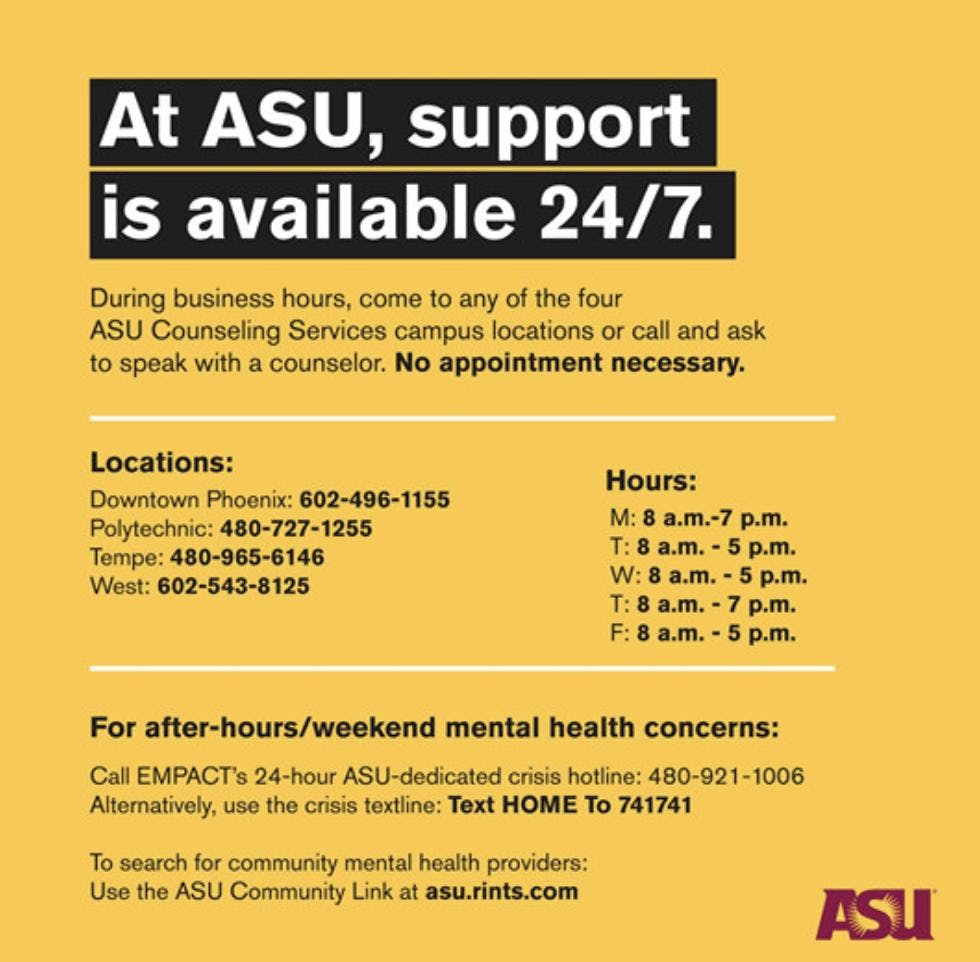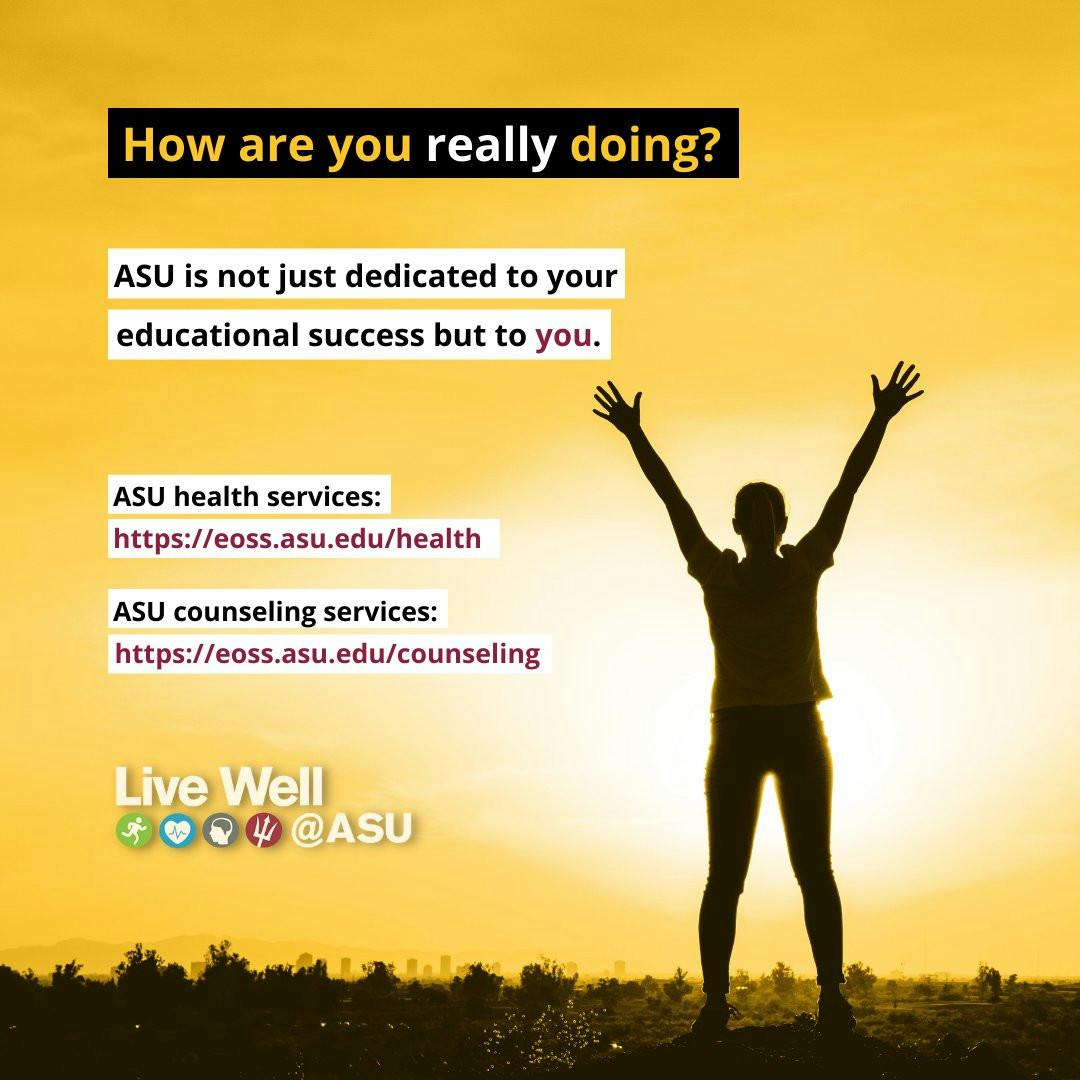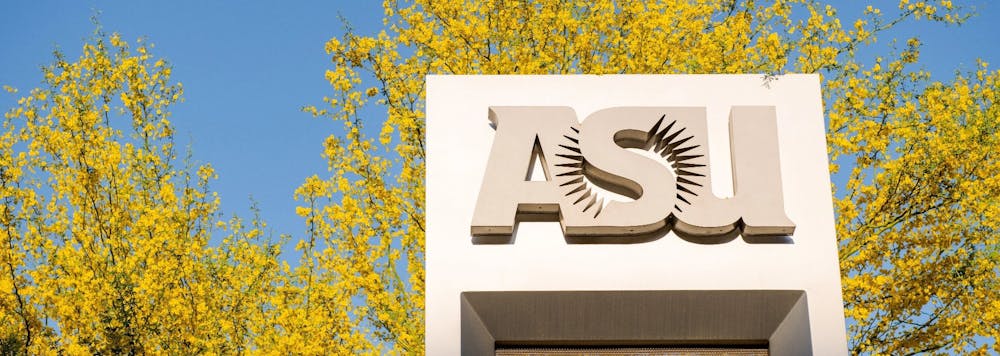Counseling Services at Arizona State University says students lack awareness of mental health resources, yet students question the effectiveness of the program.
Aaron Krasnow, Associate Vice President of Counseling Services, said students aren’t aware of services due to the location of the counseling offices and lack of coverage on the services.
The lack of awareness comes as the number of mental health crisis cases continues to increase in which the solution is to keep telling the stories of students who go through mental health and make them more aware, according to Krasnow.
“So we always need to be telling our story. We need to capitalize on this moment in time. Our generation of normalizing stress and struggle as a part of the human condition and not something to be pushed off. It’s not a sign of weakness, it’s a sign of strength. We need to increase awareness,” Krasnow said.
ASU needs to increase awareness of the counseling services because students seem unaware despite freshmen orientation and social media information, said Krasnow, while adding that students advocating for themselves is a start for that change.
The most common mental health issues students deal with are depression, anxiety, and relationship concerns, according to Krasnow.

Krasnow said that in the counseling center, ASU tends to see between 7% and 9% of the student body annually. In the health center, about one-third to 40% of the student body. He said more than half of students will use the health center before they graduate and more than 15% will use the counseling center before they graduate.
However, mental health remains an issue as ASU’s trend models show overwhelming anxiety has increased from 46.4% in 2010 to 63.4% in 2018 and severe depression has increased from 28.4% in 2010 to 41.8% in 2018.
According to the American College Health Association, 48.5% felt so depressed it was difficult to function, 15.4% considered an attempted suicide, and 2.2% attempted suicide in 2019.
Krasnow, who has been working with ASU counseling for 20 years, said without improvement students won’t receive the proper treatment, meaning the student is not receiving support.
Krasnow, in response to students’ desire for better resources, says he is always seeking improvement.
“I'm very glad to hear from those students. We always need to seek to improve,” Krasnow said. “We have several improvement processes that we do regularly whether students ask for it or not. I take that desire for improvement as a sign that students care about the mental health of themselves and of their peers.”
ASU counseling is equipped to deal with types of cases when they wish to receive feedback for their services, Krasnow said. Media reports are one way, but undergraduate and graduate students' health and counseling committees advise on improvements.
Krasnow said they discuss issues ranging from insurance to access to care. Additionally, a new feature will allow students to access help on a 24-hour basis.
Jordan Lavezarri, a senior, said her experience with ASU mental health services was a positive interaction but that they should be more aware of those who need serious help, and be able to offer solutions.
Lavezarri sought counseling services after what she labeled a ‘meltdown’ due to the stress of classes and a former abusive relationship. In her case, she only needed someone to listen. Other students, however, may need more serious counseling.
Lavezarri showed up at ASU counseling with no appointment. Because they were short-handed, she was paired with a sports counselor who didn’t regularly see ASU students.
She said ASU counseling handled her situation well, but she wonders if they would still help if they had even fewer counselors.
“Truthfully, I feel like if I had not shown up in a better state than I had, they probably would have (said) ‘Sorry, you need an appointment,’” Lavezarri said. “So part of me is saying, ‘Oh I’m glad they helped me,’ but I’m worried they wouldn’t help another person.”

Other issues Lavezarri recalled were the lack of awareness of ASU counseling. Lavezarri said it seemed as though they lacked knowledge.
“They are going to do their best to meet the needs of every student, but they don’t seem super specialized in anything. A lot of it’s nodding and saying ‘I understand,’” Lavezarri said. “That’s not always what people need.”
Lavezarri said that since resources are hidden on the second floor of the Student Center @ The Post Office building, not many students are aware they exist. Thanks to freshman orientation, she knew where the location was, but that isn’t the case for all students. She believes there needs to be more advertising.
Tommy Begay, a professor in the Department of Psychiatry at the University of Arizona, said they try to put their students’ well-being first, but the problem lies with inadequate funding for resources.
“We need to be a little bit more open to the needs of the students, and in the back of our minds realize the business and cost to provide services,” Begay said. “But at the same time (we need to) understand if this issue is not being addressed, then there’s a good possibility the student won’t fulfill the demand for educational services.”
Begay noted a prominent issue within counseling services is improperly diagnosing people who need a specific type of care. Not everyone needs the same treatment, despite what many think.
Health resources at the University of Arizona have minimal time to do an appropriate evaluation due to the sheer amount of students who need therapy at a university level, Begay said, adding that the university staff needs to be more open to the student body to meet the needs of the students.
To Begay, the real issue is whether an individual can connect to counselors on a personal level.
As long as the problem is solved from a behavior or medication perspective, Begay said, the end solution to students' mental health matters.
Stephanie Innes, a healthcare reporter for The Arizona Republic, agreed that there is a lack of awareness due to stigma around mental health, as well as inadequate funding resources. She pointed out a lack of resources in the entire state of Arizona.
Innes said studies have found that 40% of Arizona’s population has a shortage of providers. She said there are only 779 active psychiatrists in Arizona, which poses a problem when there’s a population of 7.3 million people in Phoenix alone.
Innes argues the shortage is because the rate of physicians being hired cannot keep up with the state’s growing population. Additionally, during the pandemic many nurses and healthcare professionals retired due to the stressful environment.
The lack of awareness, Innes said, is a prominent issue due to the stigma surrounding older generations. Adolescents might feel discouraged to ask for help.
“I think the younger generation is our biggest hope here, because I think the younger people are so much more willing to talk about mental health issues and I think that’s positive,” Innes said.
The cost of mental health services and the lack of coverage from insurance companies is another reason Innes pointed to as being a reason adolescents may feel discouraged from receiving help.
Arizona has mental health coverage for government health insurance, such as Medicaid. But many private insurers, such as Blue Cross Blue Shield, often lack coverage for counseling services.
The cost and lack of mental health services especially impacted young adolescents with eating disorders during the pandemic, Innes said, when they couldn’t receive the help they needed within the state.
However, work can be done to improve mental health facilities without money, Innes said, adding that the first steps are government investment in mental health facilities and prevention programs, which she thinks wouldn’t cost exorbitant amounts of money.
Mental health problems emerge at the adolescent and young adult levels, with the most common health issue among college students being depression and anxiety, Innes said.
The difference with college students, according to Innes, is it could be their first time experiencing certain mental health challenges, so resources are most critical for them. All they might need is someone to listen.
Krasnow said every student is treated differently in counseling, and ASU tries to adhere to all students' needs. He wants to advocate for students’ desires, especially if they want to improve ASU mental health services.
Krasnow said ASU counseling tries to seek improvement, which student feedback is of paramount importance.
He said he wants to create a supportive environment when creating mental health solutions. “I’m glad when students advocate for improvements because I want to be part of that improvement process.”

